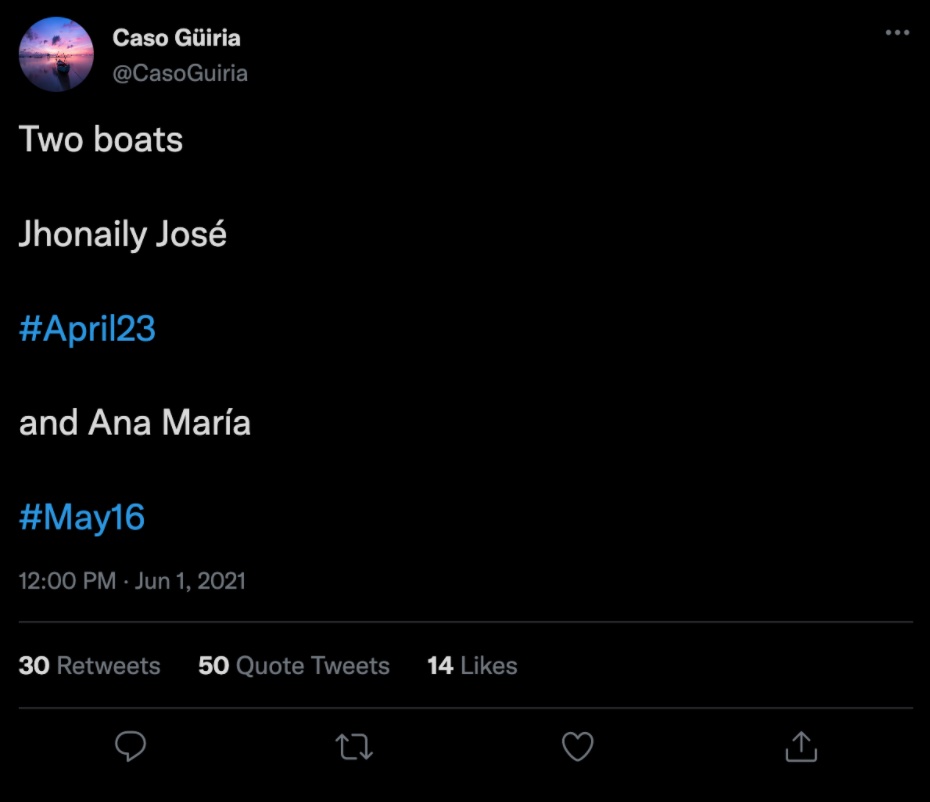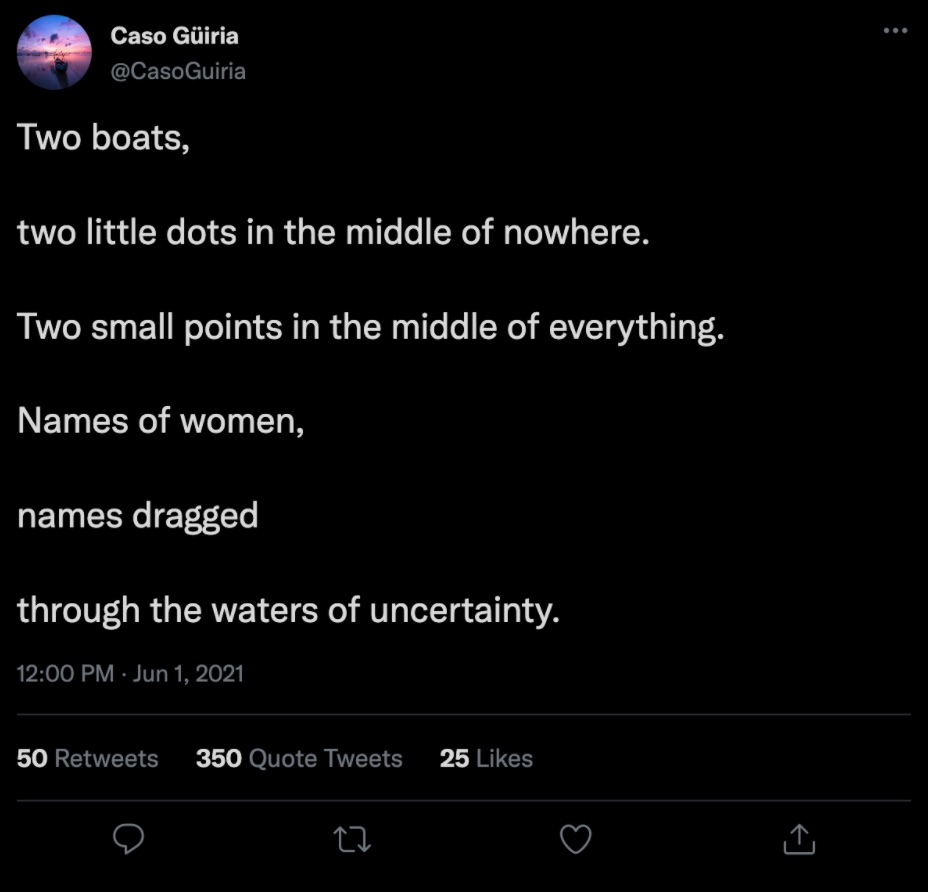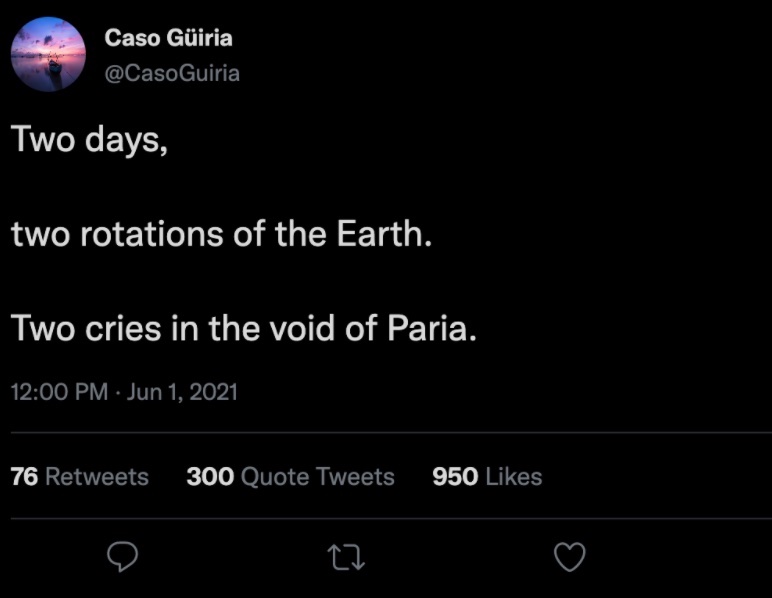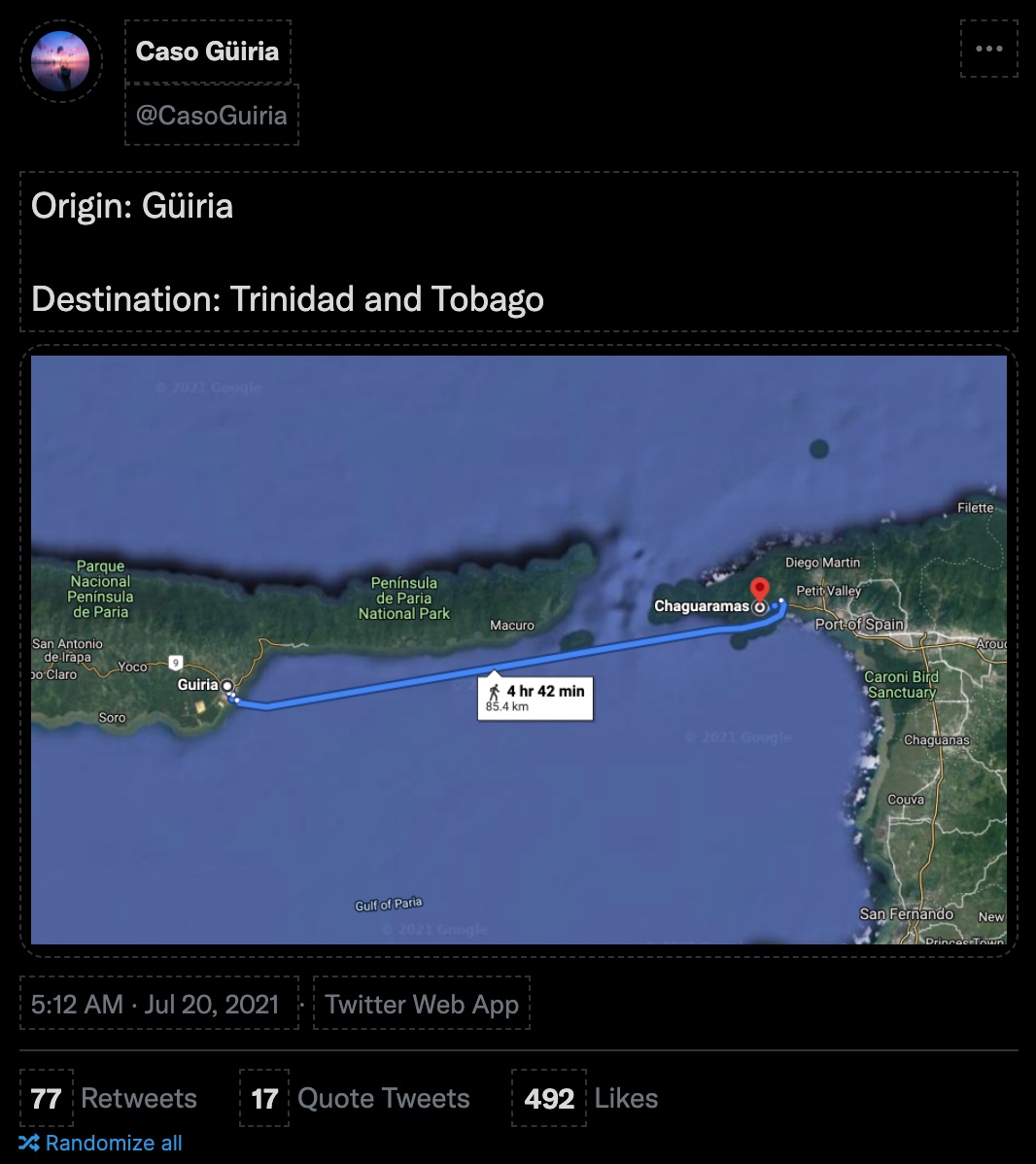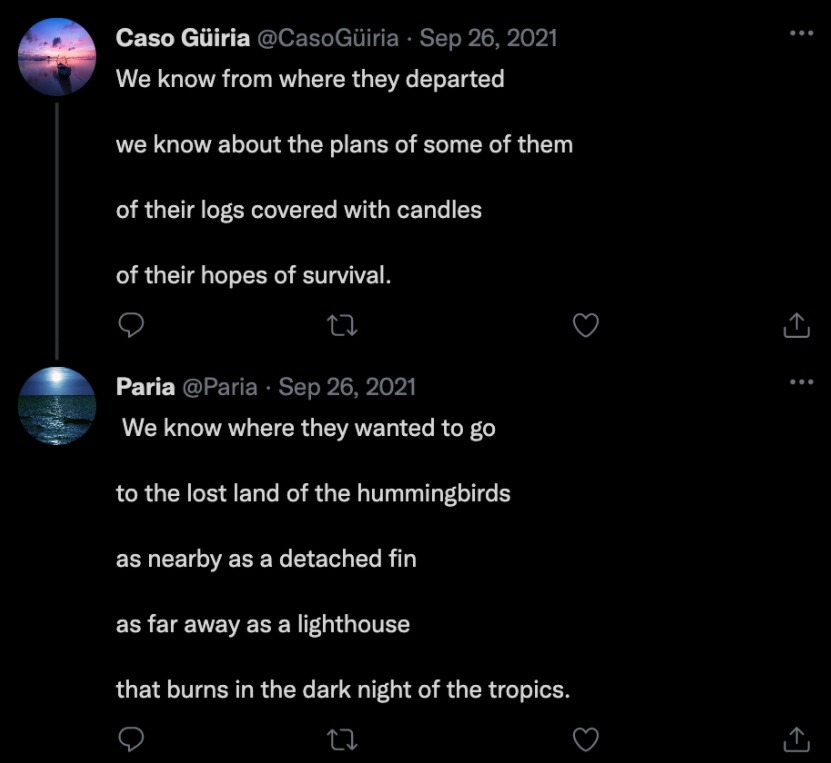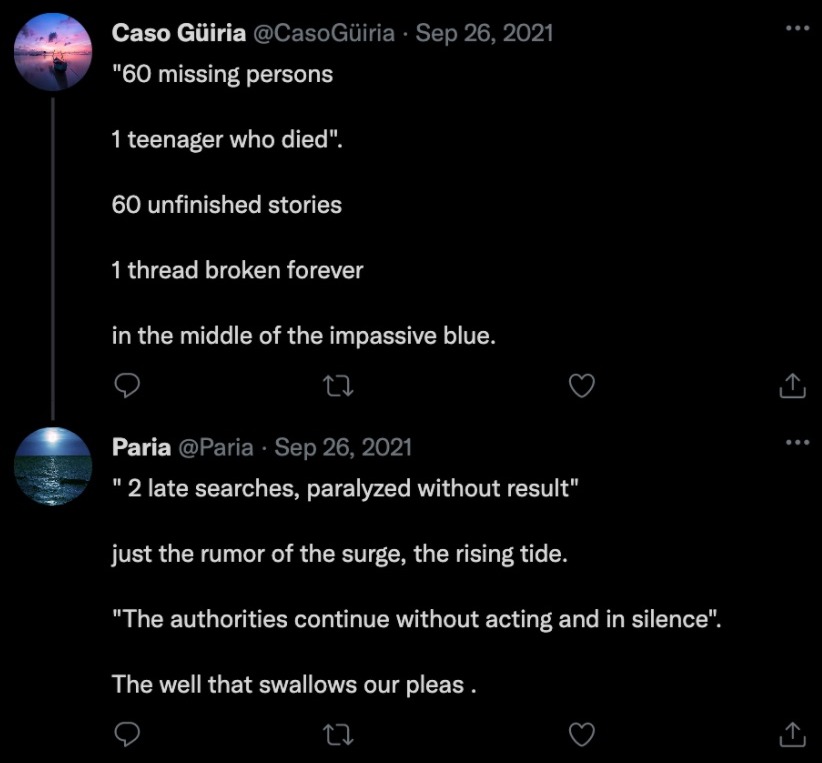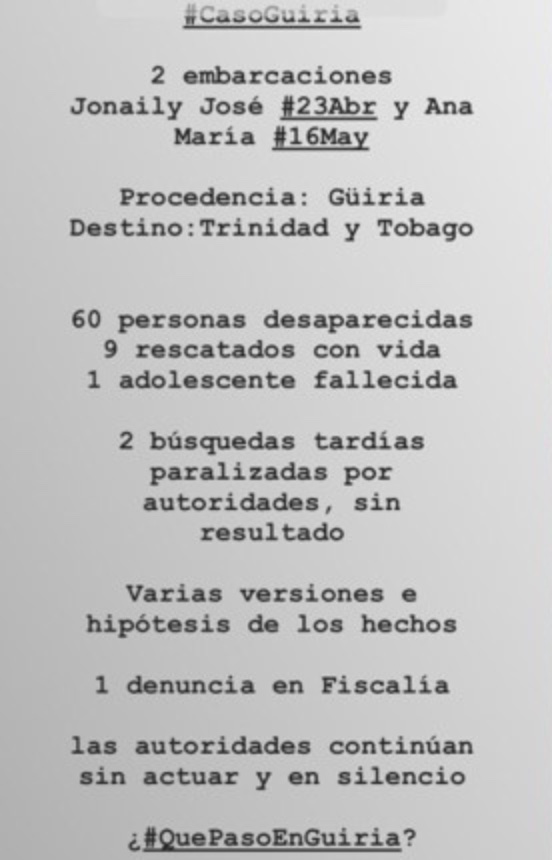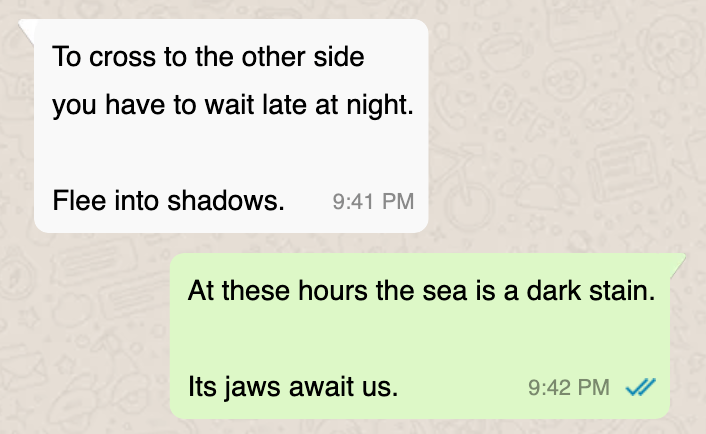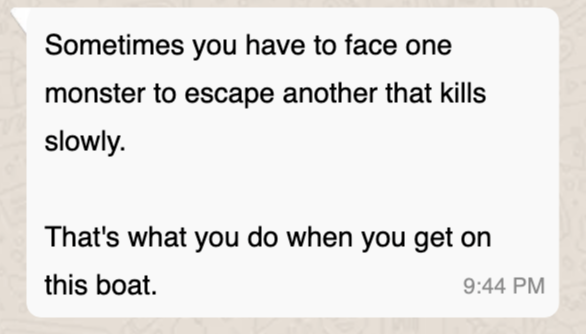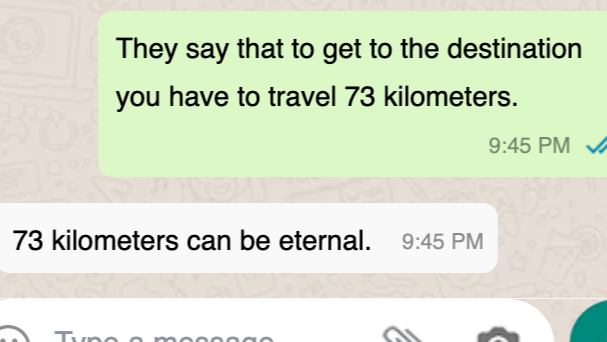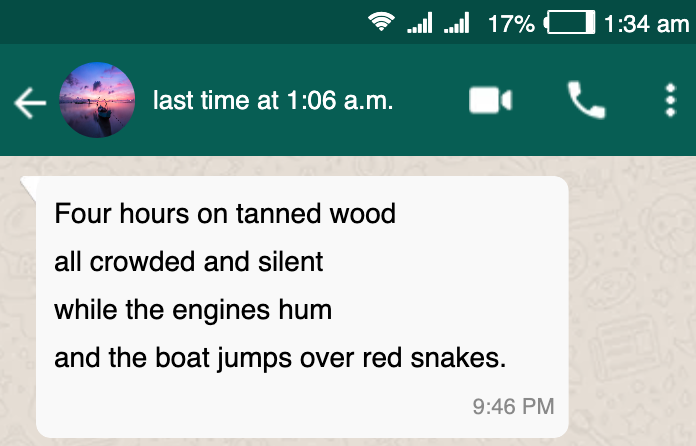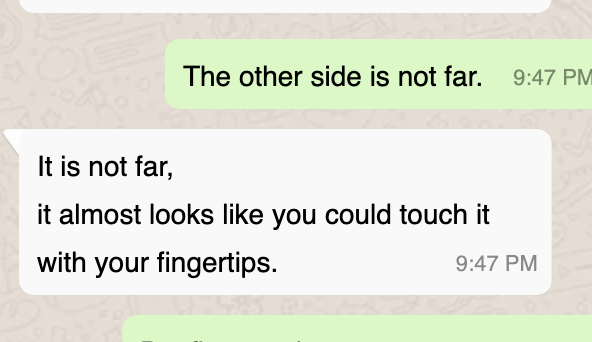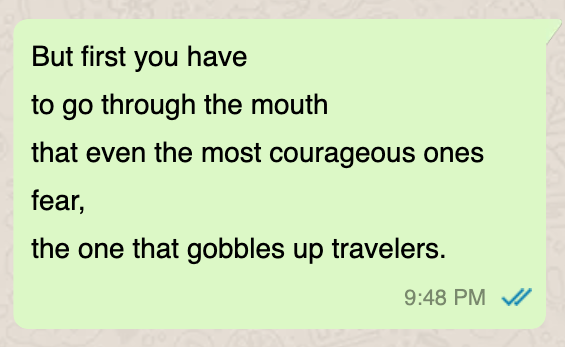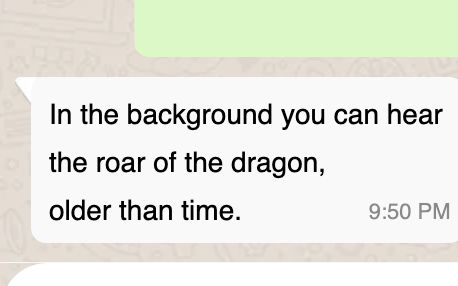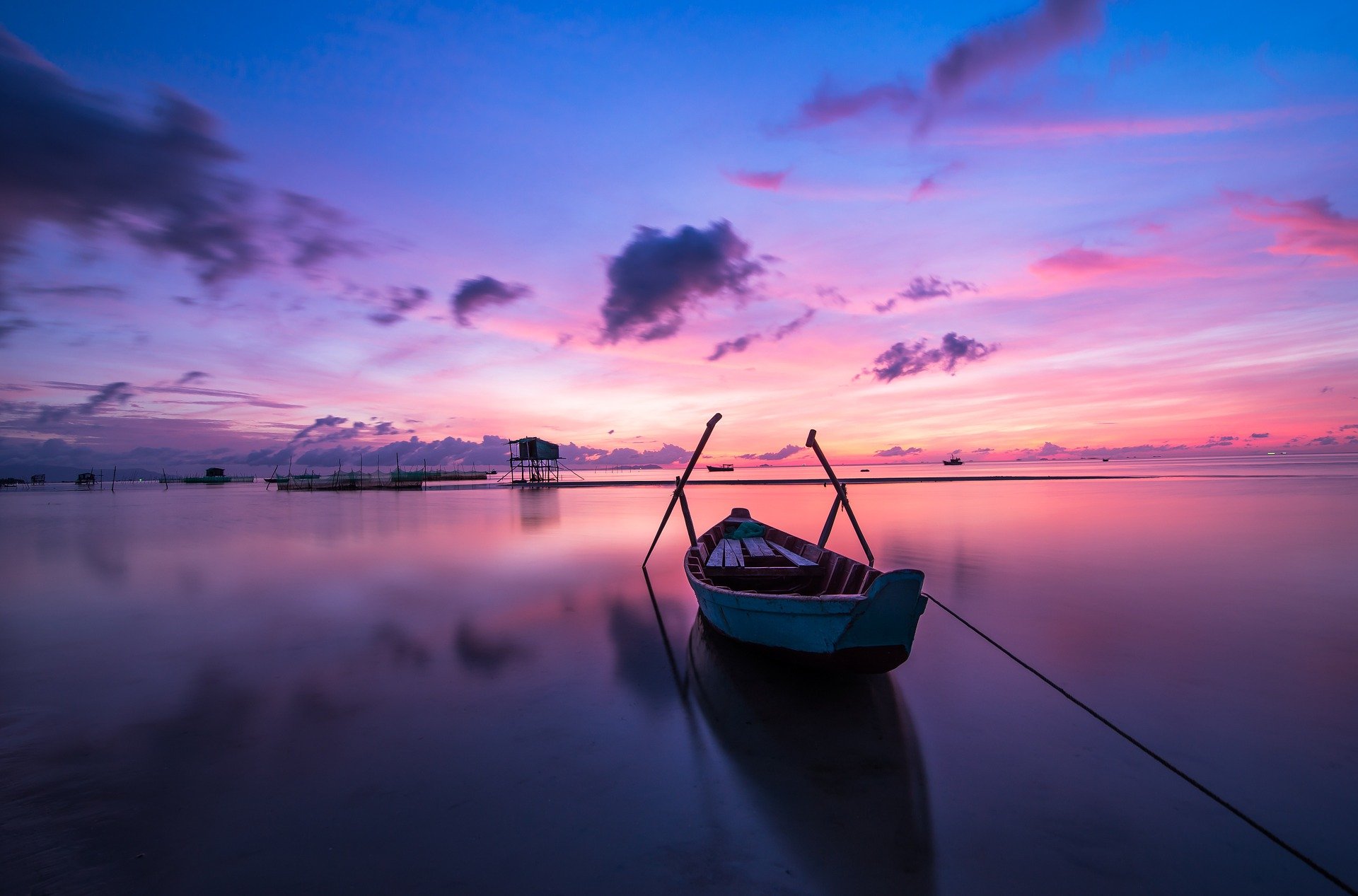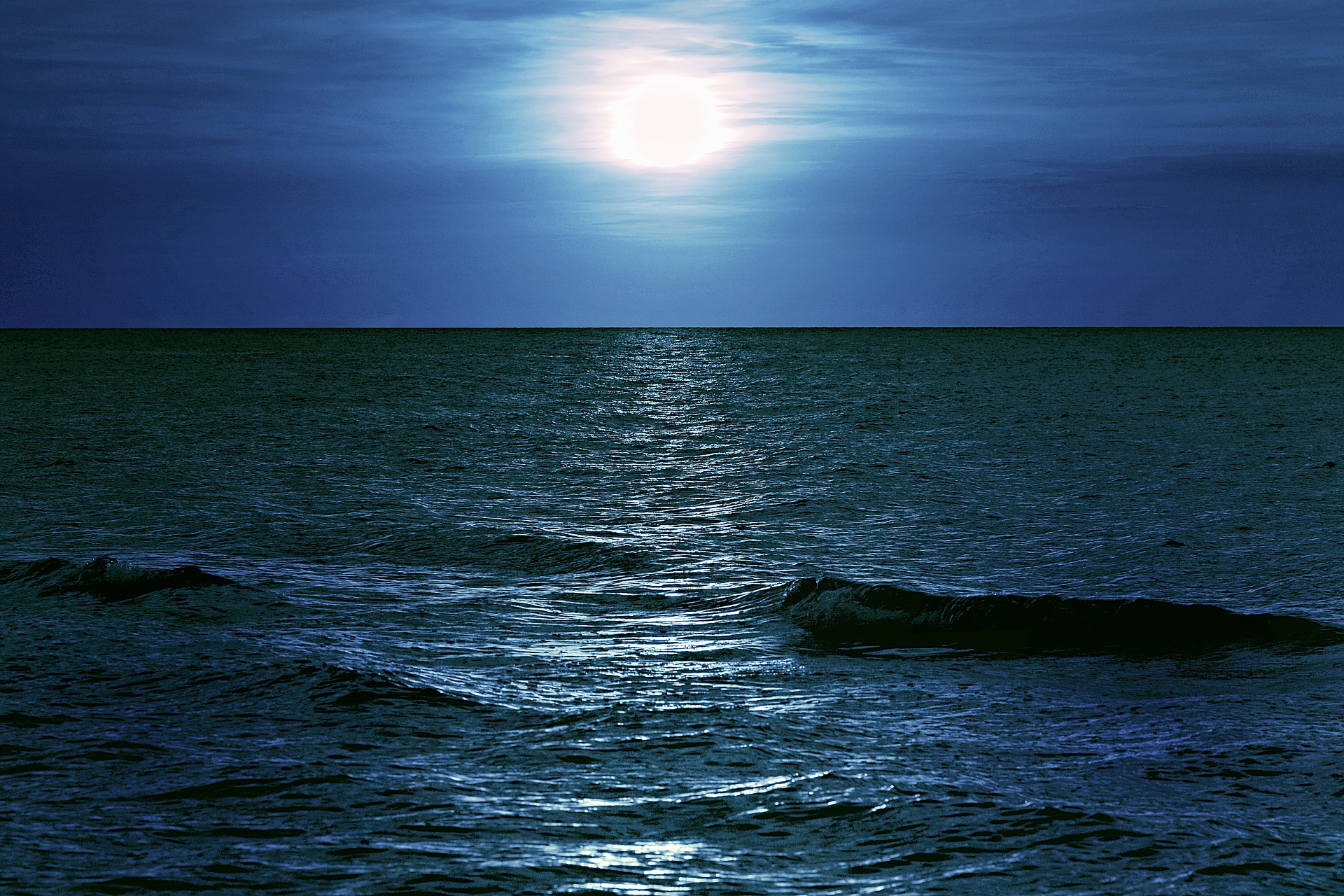He says: She's alive
She is alive
because they haven't found her dead.
She is alive because they have not told me that she is dead.
That's why he doesn't cry
there is no sadness on his face
just calm.
The helicopter only flew an hour
it was very valuable
each flight hour is worth $ 8,000
said the mayor.
That's why the search only lasted an hour.
For me she is alive.
She is alive
because they haven't found her dead.
